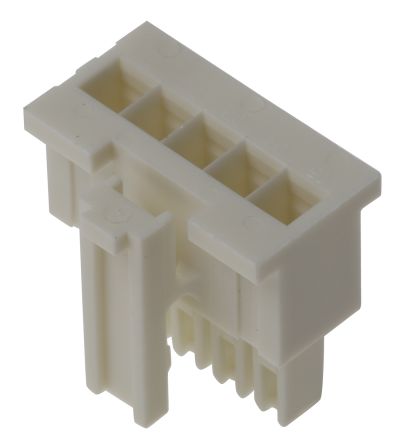Suited Connector
Connectors in English, Connectors list; Direction & Place Here There Over there Beyond Under To the left In the distance Opposite Emphasis Especially Also In particular Furthermore In addition Indeed Of course Certainly Above all Specifically Significantly Notably Time & Sequence Later After Before Then Next Soon Finally First, second Comparison As as As if Equally Similarly Like In the. Join our mailing list for the latest news, tour dates & free tickets! To put it simply, suited connectors are any two consecutive cards of the same suit (7 and 8 of spades or 4 and 5 of hearts as an example). In the proper situation (which we will get into shortly) and if played properly, this type of starting hand can be a devastating blow to your opponents bankrolls.
Suited connectors are the type of hands that will lose little but make a lot if played properly. Players tend to get lost in the grand scheme of things when playing suited connectors. Your ultimate goal with a suited and connected hand should be to either hit trips, two pair, a straight, a flush, or better. You should never be shooting for one pair type hands. A common problem for players is to get caught up in playing a suited connector when it hit’s the flop, but just barely. For example, 7s 9s can see a flop of 9h 2d 4s and make top pair, but this doesn’t mean that it now qualifies as a strong hand. All that you have in this spot is top pair with a weak kicker. Yes, it is worth a bet or calling a bet on the flop, but it is hardly valuable enough to be playing for stacks. This is why you need to define a purpose for your hands before you stick all of the money in the middle.
Pre-flop play is critical to the success of your suited connectors. There is a ton more value in playing a suited connector in position vs. out of position. When in position, you will be able to effectively extract value when you make hands, lose the least when you miss, and even make the occasional play. These are the substantial benefits that are not available out of position. If you are under the gun or in early position, the best plan is to generally get rid of your hand altogether. It seems weird, but a strong suited connector denotes a fold in early position, but can call a raise in late position. From the outset, this appears to be backwards, but it is absolutely correct.
Position
The first primary consideration when playing suited connectors is your position. The ideal position for any hand is late position, but it is even more vital when you are playing a suited connector. Some hands are going to be strong no matter where they are played, take pocket kings for example, but suited connectors are not. Try to draw a line between which positions can realistically play suited connectors and which can not. A general range would be late middle position to late position. If you are in a full ring game, there are going to be a handful of additional seats where playing suited connectors can be profitable. In short handed games, however, only the last two players before the blinds are going to be in prime spots to play their hands profitably. If you can safely check position of your list of pre-requisites for suited hands, you can then move onto the other dynamics.

Hand Strength
Suited connectors are the type of hands that will lose little but make a lot if played properly. Players tend to get lost in the grand scheme of things when playing suited connectors. Your ultimate goal with a suited and connected hand should be to either hit trips, two pair, a straight, a flush, or better. Suited connectors (or sc) are sequential cards of the same suit such as 87s, QJs, and AKs. Their their value mainly comes from hitting strong draws and hands like two pair, and depending on the type of suited connector, you can still be in good shape when just hitting a one pair hand.
Any suited connector is not as good as any other suited connector. Just as pocket pairs have varying degrees of inherent strength, so too do suited connectors. The showdown value of 56 suited is significantly less than that of a hand like 9T or JT suited. The reasons for this should be rather obvious. With 56 suited, you can easily be beaten by higher straights or flushes. While you can still lose with a straight or a flush when holding 9T or JT, it is much less likely. The actual strength of your hand should play a role in deciding whether or not it is worth calling whatever pre-flop raise is ahead of you.
Pricing
The price that it will cost to play your hand is obviously quite crucial to its long term success. Playing suited connectors can only be profitable if you know how much is too much to pay in order to see a flop. As a general rule of thumb, barring any inordinate raise sizes, a simple open raise should be called almost 100% of the time when in position with a decent or strong suited connector. The implied odds of hitting a big hand and getting paid off more than compensate for all of those times where you will miss and lose the amount of your initial call. The one exception to this rule would be if the open raiser was short stacked. Implied odds are important when playing suited connectors, and those odds are significantly diminished when you are playing against someone with very little money behind. The beauty of a suited connector is that a small investment could potentially earn you a big win. This entire premise is voided when your small investment could only earn you a small win at best.
If there is action beyond an open raise and/or calls ahead of you, your play will become less obvious. In most cases, calling a 3 bet with a pending 4 bet opportunity is a major waste of money. When players raise and re raise ahead of you, making a call would mean that you assume the original raiser will simply call the re raise. Even if they only wind up 4 betting every five hands, this will wind up being incredibly unprofitable. You should be calling raises pre flop when you have a very reasonable expectation of seeing the flop for that exact price. Sure, the blinds are going to 3 bet from time to time, but there is nothing you can do about that. Get involved with limpers or open raisers, but be very cautious if there is a ton of aggressive play right before your turn to act.
The Flop
The flop will tell you just about everything you need to know when you have a suited connector. In almost every situation, you will either hit hard or miss completely. Yes, you can flop gutshots or middle pair, but these are hardly the aim of a suited connector. If you do not land a big draw or flop one of your originally intended hands, be prepared to give up. A fatal flaw of many poker players is the inability to give up on a suited connector that did not make one of the hands that it was shooting for.
Big draws are what suited connectors wind up with most of the time when they hit the board. It is quite rare to actually make a straight or flush right on the flop, though it will certainly happen from time to time. If you are able to flop a strong draw, the key is being able to play it aggressively and without fear. Worth noting is the fact that there is a defined, albeit murky, difference between aggressive play and reckless play. Reckless play will get you into a lot of trouble, whereas aggressive play can be very profitable. If you flop a big draw, play it aggressively, but don’t press the issue and sacrifice all of the value that your hand has.
After The Flop
If you lead out with or called a bet on the flop, the turn is going to be a very critical card to your success. If you brick on completing your draw on the turn, your odds of walking away with a big hand are decreased significantly. If the price just isn’t right, don’t be afraid to throw your hand away. There is no shame whatsoever in letting go of a draw with only one card to come. If you have a sound game plan as to how you can win the hand even if you miss your draw, that is one thing, but most of the time it is best to move on. Alternatively, you could make a move, perhaps a semi bluff, in an attempt to disguise your hand and potentially take down the pot on the spot. If you get called with a semi bluff, at least you have outs and a heavily disguised hand on the river. There are a million ways to play draws post flop, and a lot of money to be made if you do it right.
Suited Connectors Odds
Knowing when and how to play suited connectors can be tough. Many will agree that these are probably among the most complicated hands to play correctly in Texas Hold’em poker. Set value is found in small pairs, and face value makes big hands worthwhile. Suited connectors are somewhere in between.
If you want to see them perform, learn to play small suited connectors through these simple steps.
The definition of suited connectors goes like this: suited connectors are poker hands made by two consecutive cards of the same suit.

For instance, they can be a 10 and 9 of spades, or 5 and 4 of clubs. Easy, right? So, what are small suited connectors? They are lower in value, also called baby connectors. The examples would be 4-5 suited and 7-8 suited. An example of a big suited connector is Jack and 10, suited.
Suited connectors are desirable because they have the highest potential to form straights and flushes when combined with the community cards.
The bigger the cards, the more top pairs they will obtain. The lower the cards, the more weak pairs they will catch.
There are a couple of main benefits to receiving a small connector initial hand. For one, you will be inherently drawing to both a straight and a flush (and a straight flush occasionally). Additionally, your hand usually stays conveniently hidden.
If you are playing no-limit Texas Hold’em poker, you can count on great implied odds on suited connectors. You should keep in mind that small connectors miss the flop about two thirds of the time on average.

They hit the flop about 5.5% of the time, and they hit decent draws around 21% of the time. Now you know how they perform.
It is recommended that you act aggressively with suited connectors most of the time before the flop. These are not the hands you chase big profit with. However, with them being part of your range you can achieve to balance out your big value hands more easily.
Suited Connectors In Hold'em
Another relevant aspect to playing suited connectors is having the discipline to fold them. They won’t be able to hit most of the time, which is when you should fold. This poses a challenge for most poker players because suited connectors just look too pretty to fold.

Yes, suited connectors look nice on the surface. Their potential of making big hands is undeniable. However, one should be careful with 3-betting and overcalling.